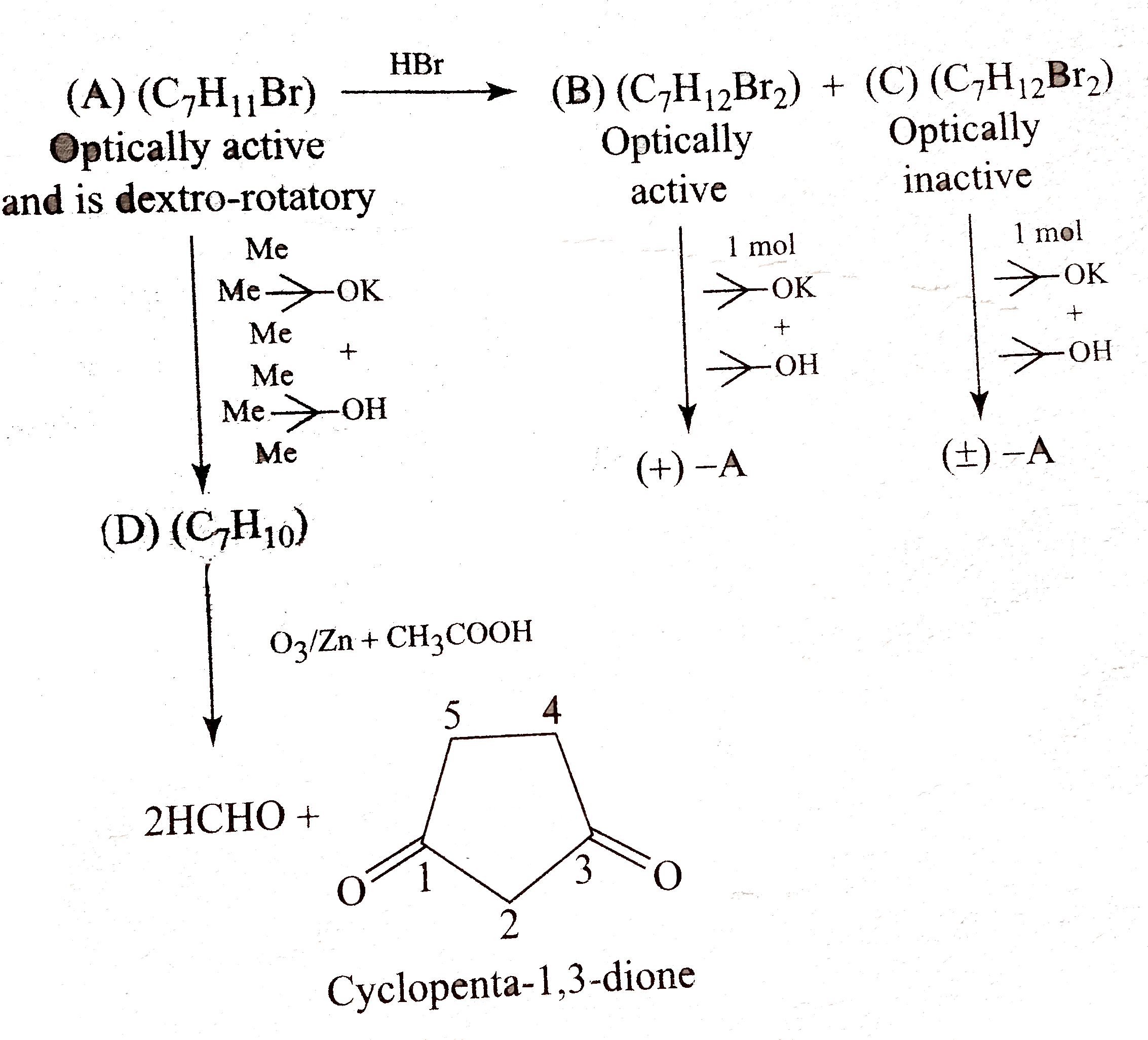An element A burns with golden flame in air. It reacts with another element B, atomic number 17 to give a product C. An aqueous solution of the product C on electrolysis gives a compound D and liberates hydrogen. Identify A, B, C and D. Also write down the equations for the reactions involved.
Since the element A burns with golden flame in air, it is sodium (Na) which has electronic configuration 2, 8, 1.
The element B with atomic number 17 is chlorine which has electronic configuration 2, 8, 7. Na and Cl react to form NaCl which is an ionic compound. Aqueous solution of NaCl on electrolysis gives NaOH and Cl, gas. Thus D is NaOH. Reactions are given as under :

Topper's Solved these Questions
- METALS AND NON METALSBOOK - U-LIKE SERIESCHAPTER - METALS AND NON METALSEXERCISE - SHORT ANSWER QUESTIONS
23 Videos
- CHEMICAL REACTIONS AND EQUATIONS BOOK - U-LIKE SERIESCHAPTER - CHEMICAL REACTIONS AND EQUATIONS EXERCISE - LONG ANSWER QUESTIONS
21 Videos
- PERIODIC CLASSIFICATION OF ELEMENTSBOOK - U-LIKE SERIESCHAPTER - PERIODIC CLASSIFICATION OF ELEMENTSEXERCISE - LONG ANSWER QUESTIONS
9 Videos
Similar Questions
An element A burns with golden flame in air. It reacts with another element B, atomic number 17 to give a product C. An aqueous solution of product C on electrolysis gives a compound D and liberates hydrogen. Identify A, B, C and D. Also write down the equations for the reactions involved.
View SolutionAn element A burns with golden flame in air. It reacts with another element B, atomic number 17 to give a product C. An aqueous solution of product C on electrolysis gives a compound D and liberates hydrogen. Identify A, B, C and D. Also write down the equations for the reactions involved.
View SolutionAn element A burns with golden flame in air. It reacts with another element B, atomic number 17 to give a product C. An aqueous solution of product C on electrolysis gives a compound D and liberates hydrogen. Identify A, B, C and D. Also write down the equations for the reactions involved.
View SolutionAn element A which is a part of common salt and kept under kerosene reacts with another element B of atomic number 17 to give a produce C. When an aqueous solution of product C is electrolysed then a compound D is formed and two gases are liberated.
(a) What are A and B?
(b) Identify C and D.
(c) What will be the action of C on litmus solution? Why?
(d) State whether element B is a solid. liquid or gas room temperature.
(e) Write formula of the compound formed when element B reacts with an element E having atomic number 5.
View SolutionA compound (A) of boron reacts with Nme3 to give an adduct (B) which on hydrolysis gives a compound (C) and hydrogen gas. Compound (C) is an acid. Identify the compounds A,B and C. give the reactions inovolved.
View SolutionA black mineral (A) on heating in presence of air gives a gas (B). The mineral (A) on reaction with dilute H2SO4 gives a gas (C) and a solution of a compound (D) on passing the gas (C) into an aqueous solution of (B), a white turbidity is obtained. The aqueous solution of (D) on reaction with potassium ferricyanide gives a blue compound (E). Identify (A) to (E) and give chemical equations for the reaction involved.
View SolutionA black mineral (A) on heating in presence of air gives a gas (B). The mineral (A) on reaction with dilute H2SO4 gives a gas (C) and a solution of a compound (D) on passing the gas (C) into an aqueous solution of (B), a white turbidity is obtained. The aqueous solution of (D) on reaction with potassium ferricyanide gives a blue compound (E). Identify (A) to (E) and give chemical equations for the reaction involved.
View SolutionGive the stereochemical forculae for (A),(B)(C), and (D) and also give the reactions involved.

View SolutionGive the stereochemical forculae for (A),(B)(C), and (D) and also give the reactions involved.

View SolutionA compound (A) of boron react with NMe3 to give an adduct (B) which in hydrolysis gives a compound (C) and hydrogen gas. Compound (C) is an acid. Indenfity the compounds A,B and C. Give the reactions involved.
View Solution
